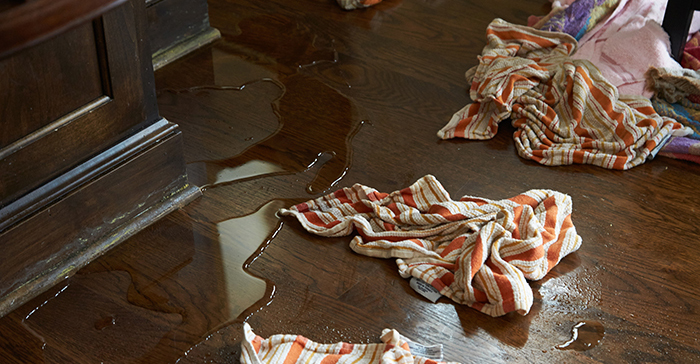Searching for Signs of Water Damage in the Bathroom
Searching for Signs of Water Damage in the Bathroom
Blog Article
Everybody has their own individual opinion when it comes to How to Prevent Bathroom Water Damage.

The shower room is extremely at risk for wet build-up as well as prospective water damage due to the constant use water in it. This post offers simple inspection techniques to aid spotting water damages dangers.
The frequent use water in the shower room makes it very susceptible for moist buildup as well as prospective water damage. By evaluating it consistently, you can decrease water related problems.
The complying with set of examinations is very easy to carry out and need to be done when in every three months in order to maintain your shower room in good shape and also to avoid potential water problems triggered by the tub, the shower, pipe joints and also plumbing, sinks, cupboards, and also the bathroom
Do not neglect executing these evaluations and be detailed while executing them. Bear in mind that these simple examinations can save you a great deal of money by providing very early indicators for water damage
Sinks and also Cabinets
Sinks as well as cabinets are subjected to moisture and also moisture daily and also are typically forgotten. Check routinely under the sink and also on the counter top over it. Repair any kind of drip in the trap as it may recommend drain troubles. Take a look around the sink, sluggish draining pipes may suggest an obstructed drain. Replace sink seals if they are split or loose.
Tub and also Shower
The shower as well as tub call for special interest and also upkeep. Check the floor tiles and replace if split. Ensure that there is no missing out on cement between the floor tiles. Evaluate and also change split caulking at joints where the wall surfaces fulfill the floor or the bath tub. Clogged drains pipes as well as pipelines troubles will protect against the tub from drying out and may show major problems beneath the tub. Speak with an expert promptly to stop structural damage. Take notice of stainings or soft areas around the bath tub walls as they may show an interior leakage.
Plumbing
Signs for water damage are difficult to detect considering that most pipes are mounted inside the walls.
Pay special interest to flooring as well as wall surfaces dampness and stains as they may suggest an invisible plumbing problem. Check dampness levels in adjoining areas as well.
The Toilet
The bathroom is an at risk water joint. Examine the water lines and search for leaks around the toilet seat, in the hose, as well as under the water storage tank. If you find any kind of indicators of dampness on the flooring around the toilet, check for leaks in the toilet rim and tank seals.
Understand that hanging bathroom bowl antiperspirants boosts the opportunities for obstructions.
TIPS TO PREVENT WATER DAMAGE IN THE BATHROOM
The average household uses approximately 80-100 gallons of water per person per day. For a family of 4, that's almost 2,500 gallons of water a week! The largest portion of this consumption comes from bathroom use. Flushing the toilet uses the most water, followed by taking a shower or bath. With that much water running through the home, water damage in the bathroom is bound to happen. Knowing how to spot signs of a water leak is essential to preventing long-term damage. This guide provides you with tips to reduce the impact of water damage on your bathroom.
CAUSES OF BATHROOM WATER DAMAGE
Pipe breaks are the most common cause of water damage we see in our daily jobs. The age of a pipe plays a large role in a pipe break as well as corrosion. Over time, the metal begins to break down, allowing water to escape. Frozen pipe breaks are also a concern in the winter months. Toilet overflows caused by paper products or children flushing inappropriate items. Degraded caulking around the toilet or bathtub can allow water seepage, sometimes behind the fixture, into the subfloor or walls. Condensation forms when the water in a pipe is cooler than the air temperature. Beads of water form on the exterior of the pipes, sometimes so much so that the water begins to drip and pool below. Sink or shower backups created by poor drainage. HOW TO PREVENT WATER DAMAGE IN YOUR BATHROOM
Inspect your toilet supply line for worn or frayed hoses and replace them as needed. Winterize your plumbing to prevent a frozen pipe break. Use vent fans to prevent condensation that can lead to mold growth. Routinely check and replace degraded caulking around your toilet or bathtub. Increase the temperature in your toilet tank and insulate your pipes during the warm summer months to keep condensation from forming. Use child safety locks on the toilets. Flush only toilet paper. "Flushable" wet wipes are actually not good for your plumbing system. Additionally, feminine hygiene products should not be flushed. Prevent water from escaping the tub or shower. Make sure shower curtains are in good condition. Inspect shower doors and replace the seal strip if necessary. Wipe up any water that accumulates on the floor and use bath mats. Water left to sit can cause damage to the tiles and flooring. Refrain from using bath products containing heavy oils to avoid a clogged drain.

We were introduced to that article about Looking for Signs of Water Damage in the Bathroom through someone on our other website. Enjoyed our post? Please share it. Help somebody else discover it. Thank you so much for going through it.
Set An Appointment Report this page